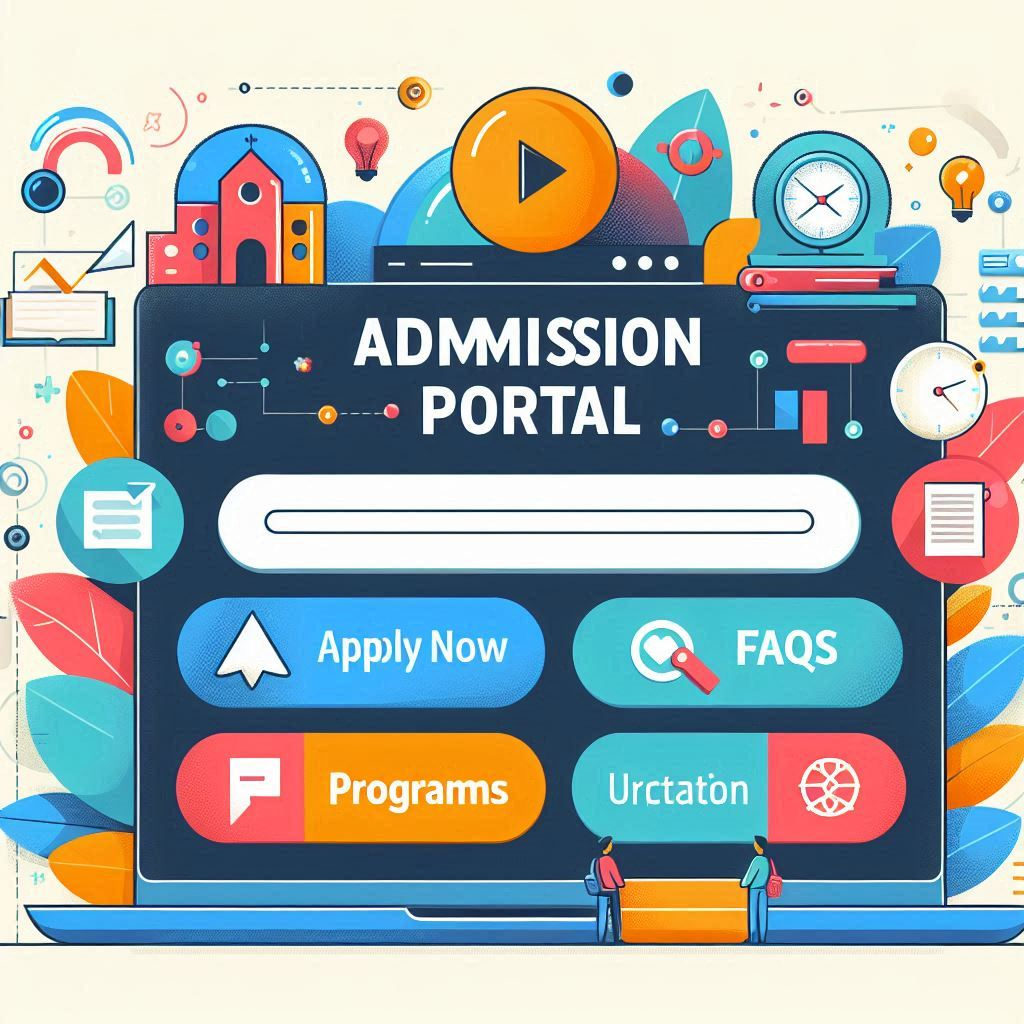ezonedigitalco@gmail.com | (+91) 9547968646
Simplifying College Admissions: Centralized Admission Portals for Undergraduate Studies in India

Introduction
The higher education landscape in India is vast and diverse, with numerous universities and colleges offering a plethora of undergraduate programs. Navigating this complex terrain can be daunting for aspiring students, often involving multiple applications, deadlines, and requirements. To streamline this process and enhance accessibility, India has embraced the concept of centralized admission portals for undergraduate (UG) admissions. This blog delves into the intricacies of these portals, their benefits, challenges, and their impact on the Indian education system.
What is a Centralized Admission Portal?
A centralized admission portal is an online platform that consolidates the application process for multiple universities and colleges. By allowing students to apply to various institutions through a single system, these portals simplify the admissions process, making it more efficient and user-friendly. In India, several states and central universities have adopted centralized admission portals to manage the admission process for undergraduate programs.
How Centralized Admission Portals Work in India
- Registration: Students create an account on the centralized admission portal, which serves as their primary interface throughout the application process.
- Application Form: The portal provides a standardized application form that students fill out once, detailing their personal information, academic history, and other relevant details.
- Program Selection: Students can browse through a list of available programs and institutions, selecting multiple programs they are interested in and prioritizing their choices.
- Document Submission: Students upload required documents such as transcripts, certificates, and identification proof to the portal.
- Payment of Application Fee: The portal facilitates the payment of application fees, either as a single fee covering all selected programs or as individual fees for each application.
- Review and Submission: After completing the application, students review their entries and submit their applications. The portal then forwards the applications to the respective institutions.
- Communication and Updates: The portal provides regular updates on the status of applications, important dates, and additional requirements. Notifications about acceptance, rejection, or waitlist status are also communicated through the portal.
Benefits of Centralized Admission Portals
For Students:
- Convenience: Centralized portals reduce the complexity of managing multiple applications, deadlines, and requirements, offering a more streamlined experience.
- Cost-Effective: Consolidated application fees and a single submission process help students save on costs.
- Accessibility: These portals provide comprehensive information and support, making the application process more accessible to students from diverse backgrounds.
- Transparency: Centralized portals offer clear and consistent information about admission criteria, timelines, and procedures, enhancing transparency.
For Institutions:
- Efficiency: Institutions benefit from receiving standardized applications, reducing administrative workload and enabling quicker decision-making.
- Broader Reach: Centralized portals attract a wider pool of applicants from various regions and backgrounds, increasing diversity.
- Data Management: These systems offer robust data management capabilities, allowing institutions to analyze trends and metrics for better planning and decision-making.
Examples of Centralized Admission Portals in India
- Delhi University (DU) Admission Portal: One of the most prominent examples, the DU admission portal allows students to apply to various undergraduate programs across the University of Delhi’s affiliated colleges. The portal provides detailed information on eligibility criteria, seat availability, and cut-off marks, streamlining the application process for thousands of students annually.
- Common Admission Portal (CAP) for State Universities: Several states in India have implemented CAPs to manage UG admissions for state-run universities. For example, the Maharashtra Common Entrance Test (CET) Cell manages the centralized admission process for various undergraduate courses in Maharashtra.
- National Testing Agency (NTA) Portal: The NTA conducts entrance exams for various central universities and institutions. The NTA portal is a centralized platform where students can register for exams like JEE Main, NEET, and CUET, and subsequently apply to participating institutions.
Challenges and Considerations
While centralized admission portals offer numerous advantages, they also present certain challenges:
- Technical Infrastructure: Developing and maintaining a robust, user-friendly portal requires significant investment in technology and infrastructure.
- Data Security: Ensuring the security and privacy of sensitive student data is paramount. Centralized systems must implement stringent cybersecurity measures to protect against data breaches.
- Equity and Accessibility: Disparities in internet access and digital literacy among students from different regions and socio-economic backgrounds need to be addressed to ensure equitable access.
- Institutional Autonomy: Balancing the need for standardization with the unique admission criteria and processes of individual institutions can be challenging.
The Future of Centralized Admission Portals in India
As technology continues to advance, the future of centralized admission portals in India looks promising. Innovations such as artificial intelligence and machine learning could further enhance the efficiency and personalization of the application process. For instance, AI-driven chatbots could provide real-time assistance to applicants, and predictive analytics could help institutions identify the best-fit candidates.
Moreover, as more states and institutions recognize the benefits of centralized admissions, we can expect a growing adoption of such systems across the country. Collaborations between educational institutions, government bodies, and technology providers will be crucial in driving this transformation.
Conclusion
Centralized admission portals for undergraduate admissions are a significant step towards simplifying and democratizing the college application process in India. By providing a unified platform for students to apply to multiple institutions, these portals offer convenience, efficiency, and transparency. While challenges remain, ongoing technological advancements and collaborative efforts promise a brighter future for higher education admissions in India. As stakeholders continue to innovate and refine these systems, centralized admission portals will play a pivotal role in shaping the next generation of Indian learners and leaders.
Whether you’re a student gearing up for college applications or an institution looking to streamline your admissions process, embracing the concept of a centralized admission portal can lead to a more efficient and equitable higher education landscape in India.
